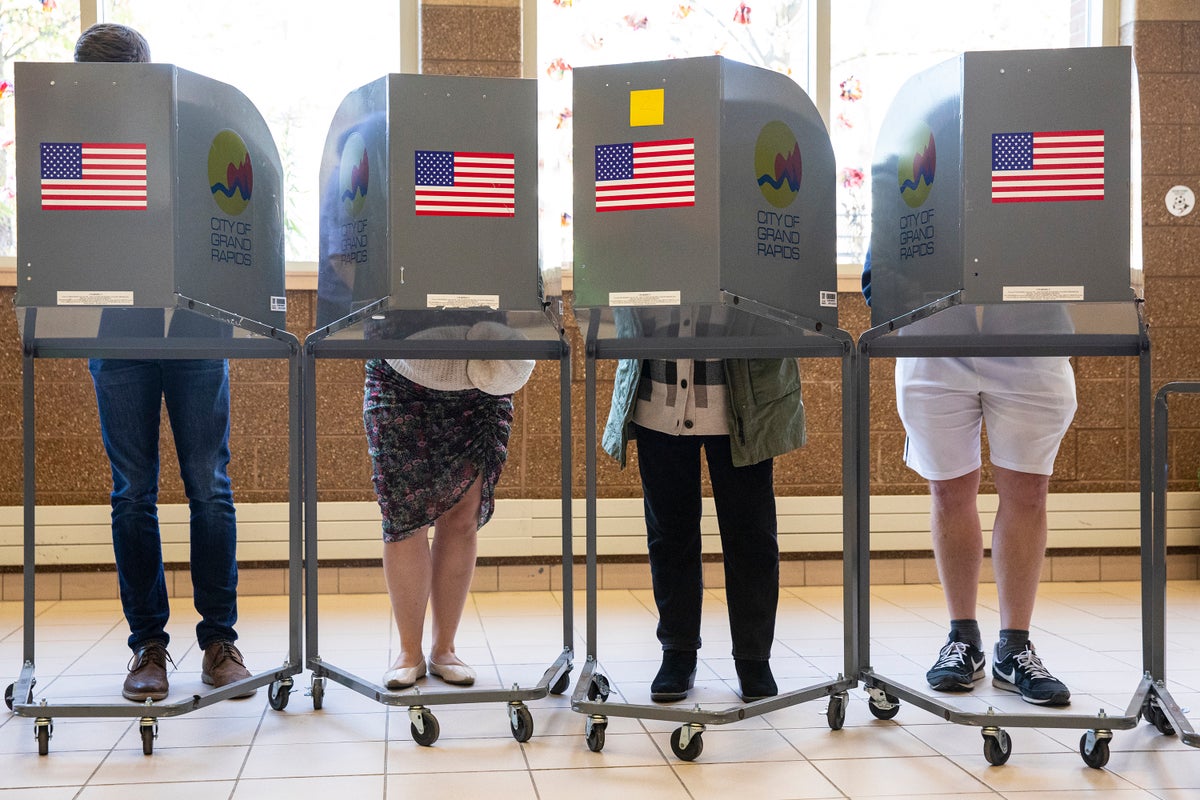
In the midterm elections, evangelical Christians across the nation reconfirmed their allegiance to conservative candidates and causes, while Catholic voters once again showed how closely divided they are -- even on abortion.
On a successful, high-profile ballot measure in the battleground state of Michigan, proposing to enshrine abortion rights in the state constitution, Catholic voters split about evenly, according to AP VoteCast, an expansive survey of more than 94,000 voters across the country.
In Kentucky, a reliably Republican state, voters rejected a GOP-backed ballot measure aimed at denying any state constitutional protections for abortion. Among those voting No were 60% of Catholic voters, according to VoteCast.
In contrast, about two-thirds of white evangelical voters in both Kentucky and Michigan voted against protecting abortion access.
Albert Mohler, president of Southern Baptist Theological Seminary in Louisville, Kentucky, said rejection of that measure in his state was an “unmitigated disaster.”
He was less surprised by abortion-rights amendments passing in more liberal Vermont and California and centrist Michigan. But the Kentucky vote was the “hardest loss” and followed a similar vote in August in another red state, Kansas.
Mohler said it's important for abortion opponents to be willing to enact their views into policy.
Voters “who voted for pro-life candidates turned around and voted against a pro-life constitutional amendment,” Mohler lamented.
On the opposite side of the fight, Catholics for Choice president Jamie Manson said abortion access protections are popular.
“In red states and blue states, with religious voters and secular voters, wherever abortion was on the ballot, abortion rights disproportionately won,” she said in a statement.
John Fea, a professor of American history at Messiah University in Mechanicsburg, Pennsylvania, said the Kentucky vote signaled that many Americans seem to want the status quo provided under the 1973 Roe v. Wade decision. It legalized abortion nationwide — with some limits — until it was overturned by the U.S. Supreme Court in June.
“Most of the country wants some restrictions on abortion, but they don’t want bans,” Fea said. “The Christian right, despite the fact that they got what they wanted with the overturning of Roe, is not getting the extent of the victory they had hoped."
Only about one in 10 voters nationwide and across most states say abortion should be illegal in all cases, according to AP VoteCast. Even among white evangelical voters, while most say abortion should generally be illegal, only about two in 10 say abortion should be illegal in all cases.
Despite setbacks on the ballot measures, abortion opponents took heart from some other election results. Michael New, who teaches social research at The Catholic University of America, cited the comfortable re-election victories for GOP Govs. Greg Abbott in Texas, Brian Kemp in Georgia, Ron DeSantis in Florida and Mike DeWine in Ohio.
“All these governors signed strong pro-life laws and did not hide from the abortion issue,” New said.
According to VoteCast, about 4 in 10 Catholics voting in the midterm elections identified as Democrats; about half as Republicans. A breakdown of some high-profile races for governor and for U.S. Senate illustrated how these voters are very much a swing constituency.
In Wisconsin, Catholic voters slightly favored Republicans in those two races.
In Pennsylvania, Catholics were slightly more likely to have voted for the Republican loser in the Senate race, Mehmet Oz, but more likely to vote for the Democratic winner in the governor’s race, Josh Shapiro. Oz is Muslim and Shapiro is Jewish.
In Arizona, Catholic voters were evenly divided between the Democratic and Republican candidates for governor, while about 60% backed Democrat Mark Kelly, seeking re-election to the Senate. The tight races in Arizona remain uncalled by The Associated Press.
In each of those three states, roughly two-thirds or more of white evangelical Christian voters backed the GOP candidates.
Another notable factor in these results: large majorities of voters who describe themselves as nonreligious voted for the Democrats and supported abortion rights in their decisions on the Michigan and Kentucky ballot measures.
While it remains uncertain which party will control Congress, John Fea and other scholars said the election was a setback for at least some Christian nationalist candidates on the Republican side – those who fuse Christian and American identity, symbols and mission.
While some candidates associated with the view succeeded – such as U.S. Rep. Marjorie Taylor Greene, a Republican re-elected in her overwhelmingly red Georgia district – those facing a more mixed electorate struggled.
Republican Doug Mastriano -- whose campaign rallies were infused with Christian music and symbols though he has rejected the “Christian nationalist” label -- lost decisively in the race for governor in Pennsylvania. Republican U.S. Rep. Lauren Boebert, also associated with the movement, faced a tighter-than-expected race for re-election in Colorado.
Fea said Mastriano may have alienated people with his Christian nationalism but also with other factors, such as his efforts to overturn the 2020 presidential election results.
“I think it’s a vote against an extreme brand of Christian nationalism, combined with election denying,” said Fea, author of “Believe Me: The Evangelical Road to Donald Trump.”
Mastriano won about 6 in 10 of the votes of his fellow evangelical Christians, according to VoteCast, but that seemed to slightly lag behind the two-thirds who backed Mehmet Oz.
Overall, among voters nationwide, about 4 in 10 say they attend religious services at least monthly; about a third say they never attend. About a fifth say they go once a week or more.
Democrats largely attend religious services less frequently – about 7 in 10 go less than monthly. Among Republicans, 46% attend at least monthly, while 54% go less often.
___
Follow the AP’s coverage of the 2022 midterm elections at https://apnews.com/hub/2022-midterm-elections. And learn more about the issues and factors at play in the midterms at https://apnews.com/hub/explaining-the-elections.







